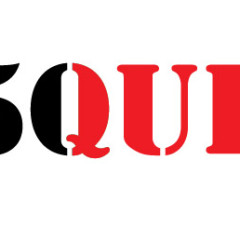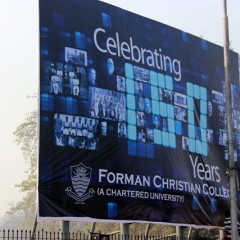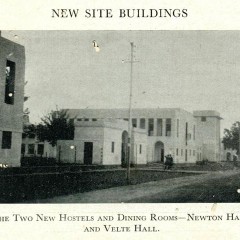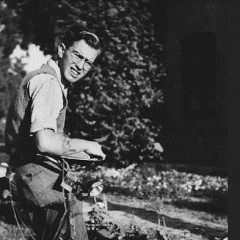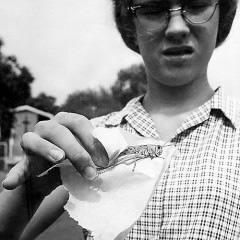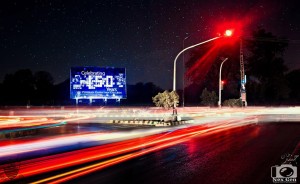January 150 Quiz Answers
This is the second in our series of quizzes to celebrate FCC’s 150th anniversary. This quiz looks at some aspects of FCC’s history. Here are the correct answers for the January 150 Quiz: 1. Dr Charles W Forman was the founder of the Mission School, the first English-medium school in Lahore, which grew to become Forman Christian College. What does the “W” in his name stand for? Answer: William 2. FCC’s motto “By love serve one another” is a Biblical quotation. In which book of the New Testament is it found? Answer: Galatians 3. FCC was the first college in this part of the subcontinent to allow female students to enroll. Which year were the first female students admitted? Answer: 1902 4. Non-British nationals occasionally receive knighthoods for contributing to relations between their country and Britain. Which FCC principal was a recipient of such a knighthood? Answer: Dr James Carruthers Rhea Ewing 5. FCC is famous for a number of “firsts” in the region. Which of the following was NOT a first for FCC? Answer: The first to have a students’ Dramatics Society 6.The FCC Library once owned a book of poetry by a Romantic poet which included a letter written in his own hand. While the original book and letter have disappeared, a copy of the letter’s contents remain. Who was the poet? Answer: Byron 7.The origins of United Christian Hospital go back to when FCC converted two of its hostels into a hospital to treat wounded refugees at Partition. Which two hostels were these? Answer: North (currently Shirazi) and West Halls 8. Lahore’s educational institutions have produced a number of accomplished writers. Which of the following was a Formanite? Answer: Krishan Chander 9. Originally called Centenary Hall to celebrate FCC’s 100th anniversary, Sinclair Hall was designed by the Daghestani-born architect Nasreddin Murat Khan. Which famous building did he design in Lahore (incidentally, free of charge)? Answer: Minar-e-Pakistan 10.The first graduates of Forman Christian College received their degrees from which university? Answer: Calcutta...
FCC billboard gets a makeover
The billboard at the corner of Zahoor Elahi and Canal Bank Roads has been updated to acknowledge our Sesquicentennial Year (150th anniversary). For those who missed the show, here are some pictures: ...
My Visit to the Camp
It was in the year 1937 that I came for my B.A. in the Forman Christian College. It was a remarkable change for I had shifted from a “pathshala” to a college, a college which is a college in every sense of the word. Since then I have been proud of it. But I have often felt inferior for I have a disqualification which I have always hesitated to disclose. All these years I have tried to hide the fact that I am not an “Old Camper.” I had never gone to the new site though I had read and heard much about it and knew everything about the new scheme of the authorities. Two camps had been held but I had yet to see what a camp was and what the new site looked like. It was one afternoon in the last week of March this year. I was sitting in a corner of the English seminar, turning the pages of The Cambridge History of English Literature, when suddenly a friend walked in with the news that Dr. Velte had been kind enough to postpone our examinations to the second fortnight of May. What a heartening news it was! It was a pleasant surprise. We all closed our books, and how to celebrate the good news became the topic of discussion. Some were in favour of going to see “Zindagi,” others were very emphatic in putting forward the claims of “Ninotchka.” I, being a non-camper, of course, was for paying a visit to the camp. My suggestion was not appreciated so I found myself among a microscopic minority. The musical sound of the library clock announced three and we were on our legs. I got only one companion and we both made our way to the camp. Cycling through Lawrence Gardens, in ten minutes we were on the Jail Road. A few minutes after we had taken the turn along the canal, I at once noticed the College flag flying high, a number of tents, some beautiful white buildings and bungalows and a small pillar enclosing a vast area of land. This sight revived in me the experiences of my childhood when in 1923 I had seen the beautiful city of New Delhi being erected in nearly similar conditions and surroundings. A crossing over the canal brought us to the “Forman Christian College Estate.” We did not know that Mr. Speers had succeeded by then in getting a fine pakka road leading direct to the main building of the College. As were going round the buildings, I saw a yellowish white car in the distance. I thought that...
An American in India
…Which brings me to the label of “American Indian”. Well, why not? My parents were American, but India was the land of my birth. I was conceived, born in 1925, and nurtured in the Bengal railway colony of Kharagpur, almost as a kind of affirmation by my parents that the family- which included my Pennsylvania-born older brother- was now Indian as well as American. My brother had arrived in Kharagpur with my parents in 1923, as a four-year old. My sister rounded out our family roster with her birth in Kharagpur three years after mine. It was Indian air that filled my lungs as I inhaled and bellowed for the first time, and it was produce of the Indian soil that nourished me through infancy and childhood. My Indian ayah watched, bathed, dressed, fed, and put me to sleep under mosquito net with Indian lullabies, and it was in her arms that I spoke my first word, chand, an Indian word, while pointing at the moon. The passport amendment bearing my name in my parents’ passport said “American,” but in so many other important respects, I was Indian. So what is my label? Probably not any one of these. It depends upon how one feels at any given time. But there was one revealing experience at the outset of my teaching career at Forman Christian College in Lahore, formerly in India, now in Pakistan. It was the first day of class at the opening of the fall term. I entered the room. The students, most of whom were wearing the dark-blue FCC blazer, all stood until I took my place at the front and gave them permission to sit. I called the roll without too much difficulty. The boys listened with what seemed to be a flattering degree of attention. All went well and the class ended. At that point I was surrounded by a circle of smiling young Punjabi and Anglo-Pakistani (formerly Anglo-Indian) men, one of whom said, “Sir, we are so happy. You are the only American we can understand!” What better endorsement of my identity could there ever have been than this?… Text source: American Indian in Kharagpur: Exploring a Personal Brand Name by Stanley E Brush, published in The Way We Were: Anglo-Indian Chronicles Images source: www.dadinani.com Note: According to http://www.dadinani.com/capture-memories/read-contributions/life-back-then/140-american-boyhood-british-india: After Stanley completed graduate work in sociology and religion, and Beverly [his wife] finished her nursing degree, they moved with their two young daughters, Cynthia and Victoria, to Lahore, Pakistan in 1952. Stan taught English and History at Forman Christian College and Punjab University. Beverly worked at United Christian Hospital. In 1963, Stan moved with his family to...
The Day of the Locusts
Locusts swarm over Forman Christian College campus hockey fields, Lahore Pakistan (1962) …I’d like to share an “outside-in” perspective on my childhood that was similar in many ways to the Anglo-Indian experience during the first half of the twentieth century. My parents moved to West Pakistan, the western portion of this new country, in 1952, a short five years after Partition. It was to be my childhood home for a decade. My sister hadn’t even reached her first birthday. I was an impressionable, curious, but less than cooperative two-year-old… …We lived in several places. Our first home was in the dusty rural village of Raiwand, connected to the rest of the world by the railroad, and to other villages by worn footpaths alongside the canal banks and rutted roads etched into the earth by heavily-laden bullock carts. Within a year’s time, we moved to Forman Christian College, a well regarded, men’s private educational institution, in the vibrant city of Lahore. My father taught English before finding his niche as a history professor. My mother employed her nursing skills by volunteering to keep United Christian Hospital patients’ charts and record up-to-date—each one written entirely by hand… …We experienced the locust swarms, spring of 1962. They descended over Lahore’s Forman Christian College campus like a swirling dust storm. My sister and I, my folks as well, dashed up to the second story verandah to have a locust’s eyeview of the green lawns, trees and hockey fields beyond the eucalyptus row and hedge. Mom recalls “bugs being everywhere.” Victoria remembers “going up on the roof…and banging pots with spoons,” which the wise adults informed us would deter the ravenous locusts – a type of huge grasshopper – from devouring the sports fields and denuding trees. (From my mature vantage point as an enthused gardener, the veracity of this practice seems dubious.) I do recall great excitement among the household adults, staff and my folks alike….a mix of anticipation and alarm….with little comprehension on my part for its basis. I also remember watching more experienced Pakistanis chasing them off the lawns and knocking quantities of locusts out of the sky and with big colorful cotton cloths. After 48 intervening years, none of us can recall if there was much damage done. Cynthe’s love of animals doesn’t extend to locusts (1962) Our family of four sat in designated places for dinner as usual. Sunlight slanting through the tall windows behind my back as we waited for the meal to be served. At some point, our cook and bearer from #15 (our house on the FCC campus) proudly brought us a heaping plateful of...

